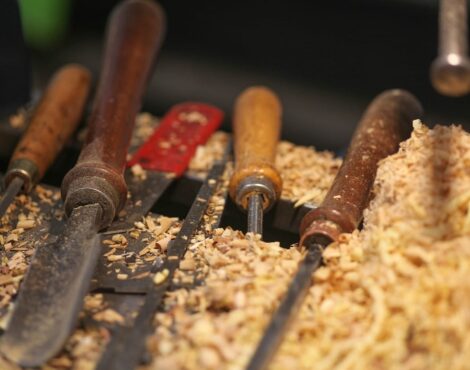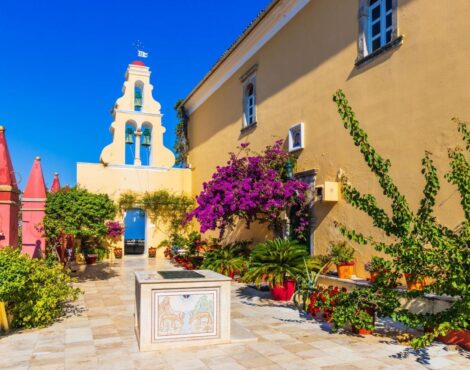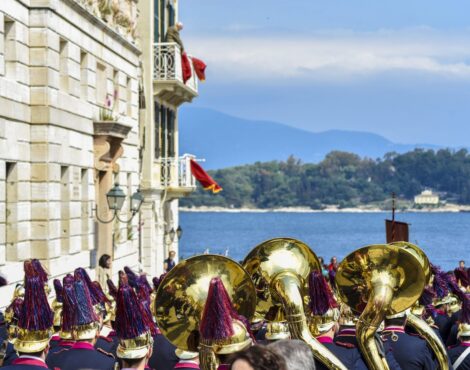The Venetian Footprint on Corfu’s Architecture and Identity
Few places in Greece carry such visible traces of Venetian influence as Corfu. For more than four hundred years, the island was part of the Republic of Venice, and that long connection shaped everything from its buildings to its customs. The Venetians left behind more than fortresses and mansions they left a spirit of elegance, order and beauty that still defines the island today.
The Venetian Era
The Venetians ruled Corfu from 1386 to 1797, using it as a stronghold to control trade routes across the Ionian Sea. During that time, they built fortifications, ports, public buildings and churches, transforming the island into a blend of East and West. Unlike other parts of Greece, Corfu was never occupied by the Ottomans, so much of its Venetian character survived intact.
The local population adopted Venetian customs, language and even architecture. Families decorated their homes with coats of arms and painted walls in warm tones of red and yellow. The influence can still be seen today in the old town, where narrow lanes, balconies and courtyards reflect centuries of shared culture.
Fortresses and Defense
The Old Fortress, standing at the eastern edge of Corfu Town, is the most visible reminder of the Venetian era. Built on a rocky peninsula, it protected the harbor from invaders and served as the administrative heart of the island. Across from it lies the New Fortress, constructed later to strengthen the city’s defense. Together they gave Corfu the reputation of being one of the best-fortified islands in the Mediterranean.
Walking through the massive stone gates, visitors can still see the lion of Saint Mark carved above the entrances the symbol of Venice that once flew proudly here. Inside, tunnels, bastions and old cannon positions tell stories of sieges and victories.
The Urban Landscape
Beyond the fortresses, the Venetian influence extends into the very design of Corfu Town. The narrow streets, known as kantounia, were built close together to provide shade and protection from the wind. The houses rise tall and narrow, with green shutters and tiled roofs. Many buildings have stone arcades on the ground floor, where merchants once displayed their goods.
The overall impression is not purely Greek nor Italian but a mixture that feels unique. The colors, textures and details form a cityscape that belongs to both worlds the Greek heart with a Venetian face.
Churches and Bell Towers
Religion in Corfu also carries traces of the Venetian period. The island remained Orthodox under Venetian rule, yet many churches reflect Western influence in their design. Bell towers rise high above the roofs, and interiors feature elaborate icons framed with gold.
The Church of Saint Spyridon, built in the late 16th century, is perhaps the most iconic example. Its red dome and tall campanile echo Venetian style while preserving Orthodox tradition. Smaller chapels scattered through the old town and countryside continue this blend, showing how two cultures learned to coexist through art and faith.
Palaces and Mansions
The Venetian nobles built elegant homes across the island. Many of these mansions still stand, especially in the old town and nearby villages. Their facades feature stone balconies, arched windows and family crests. Some have been restored as museums or guesthouses, allowing visitors to experience the atmosphere of the past.
In the countryside, Venetian architecture appears in simpler forms. Old estates known as metochia combine local stone with decorative details inspired by Italian design. These houses often include small chapels and storage rooms for olive oil and wine, reflecting both practicality and beauty.
The Spirit of the Venetians
Beyond architecture, the Venetian presence influenced Corfu’s spirit. The emphasis on art, education and civic pride came from Venetian culture. Music flourished, and painting developed its own Ionian style that mixed Byzantine and Western techniques. Even the way Corfiots celebrate festivals, decorate their streets and welcome guests carries an echo of that refined heritage.
The Venetian love for order and aesthetics can still be felt in the island’s daily life. Locals take care of their homes, paint doors in bright colors and plant flowers in every corner. Beauty here is not luxury; it is a way of living.
Corfu’s Identity Today
Centuries after the Venetian departure, their legacy remains part of Corfu’s identity. It gives the island its distinct European character while preserving its Greek soul. Visitors sense it in the architecture, the music and even in the relaxed elegance of its people.
To walk through Corfu Town is to walk through history written in stone. The lion of Saint Mark may no longer guard the gates, but its presence lingers in the graceful arches, the bell towers and the rhythm of life that moves slowly through the narrow streets. The Venetian footprint is not a shadow of the past but a living mark that continues to define the island’s beauty.





